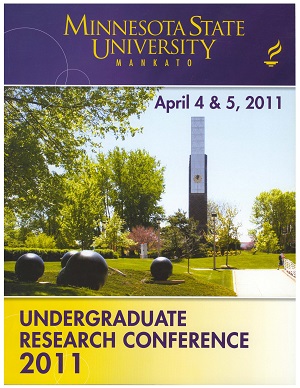Coexistence of Multi-allelic Polymorphism with Migration and Selection
Location
CSU 253/4/5
Start Date
4-4-2011 1:30 PM
End Date
4-4-2011 3:00 PM
Student's Major
Mathematics and Statistics
Student's College
Science, Engineering and Technology
Mentor's Name
Namyong Lee
Mentor's Department
Mathematics and Statistics
Mentor's College
Science, Engineering and Technology
Description
Population ecology is concerned with the growth patterns of populations. This field has many applications, ranging from survival at the environmental level, to the spread of infectious diseases at the cellular level.
Mathematical modeling and computer simulation can be powerful tools in researching this area. I will be investigating the spatial patterns in populations (or gene frequencies) due to migration and selection. My research conditions are for the maintenance of polymorphism under a variety of migration schemes in discrete-space and continuous-time mathematical models. The results will be applicable from the ecological level to the molecular level. Some species are better at adapting to a certain environment and evolve more quickly to fill a niche (specialists). Other species are less capable of adapting to their environment (generalists). Generalists survive when immigration between two distinct populations of similar species occurs. For example, species A, B, and C all coexist on two distinct islands. Species A is better adapted to shade and species C is better adapted to light; species B is in-between. If island 1 has shade, and island 2 does not, then we would expect only species A to survive on island 1, and only species C on island 2.
However, under immigration all species could survive and coexist. This could be a major factor in helping maintain and manage diverse species. We will use our understanding of populations to create mathematical models and computer simulations that will demonstrate this phenomenon and help us to gain an understanding of the principles behind the concepts.
Coexistence of Multi-allelic Polymorphism with Migration and Selection
CSU 253/4/5
Population ecology is concerned with the growth patterns of populations. This field has many applications, ranging from survival at the environmental level, to the spread of infectious diseases at the cellular level.
Mathematical modeling and computer simulation can be powerful tools in researching this area. I will be investigating the spatial patterns in populations (or gene frequencies) due to migration and selection. My research conditions are for the maintenance of polymorphism under a variety of migration schemes in discrete-space and continuous-time mathematical models. The results will be applicable from the ecological level to the molecular level. Some species are better at adapting to a certain environment and evolve more quickly to fill a niche (specialists). Other species are less capable of adapting to their environment (generalists). Generalists survive when immigration between two distinct populations of similar species occurs. For example, species A, B, and C all coexist on two distinct islands. Species A is better adapted to shade and species C is better adapted to light; species B is in-between. If island 1 has shade, and island 2 does not, then we would expect only species A to survive on island 1, and only species C on island 2.
However, under immigration all species could survive and coexist. This could be a major factor in helping maintain and manage diverse species. We will use our understanding of populations to create mathematical models and computer simulations that will demonstrate this phenomenon and help us to gain an understanding of the principles behind the concepts.
Recommended Citation
Flick, Andrew J.. "Coexistence of Multi-allelic Polymorphism with Migration and Selection." Undergraduate Research Symposium, Mankato, MN, April 4, 2011.
https://cornerstone.lib.mnsu.edu/urs/2011/poster-session-C/23



